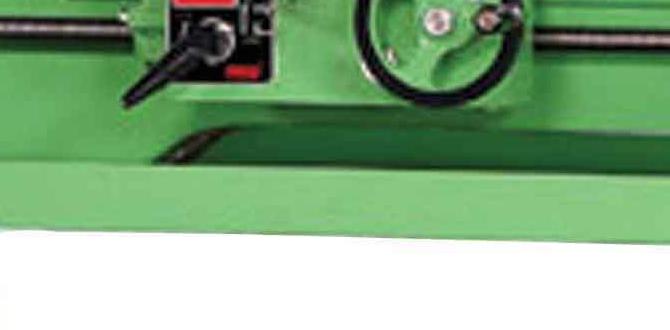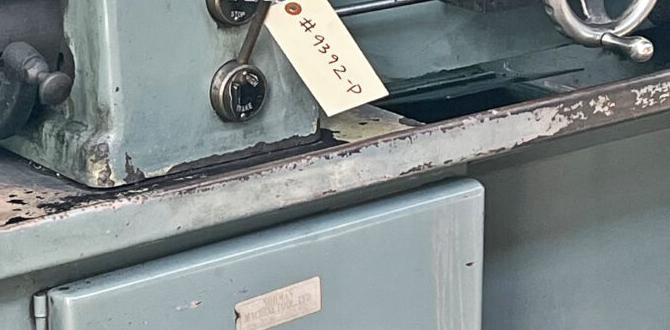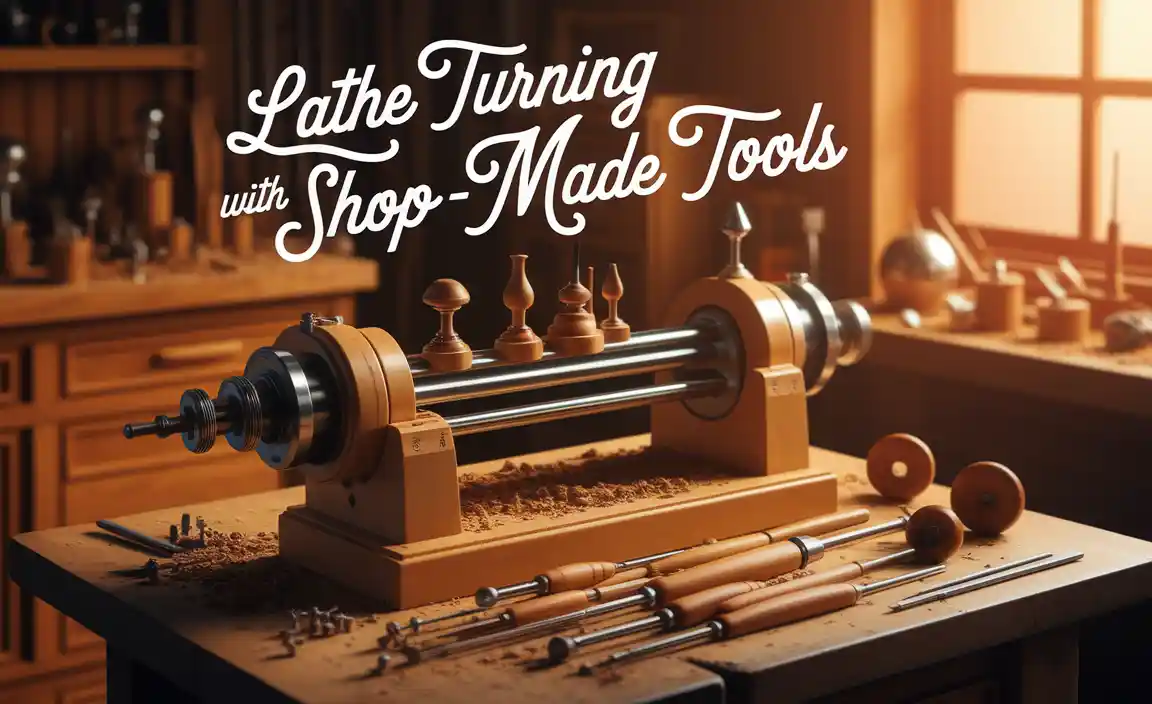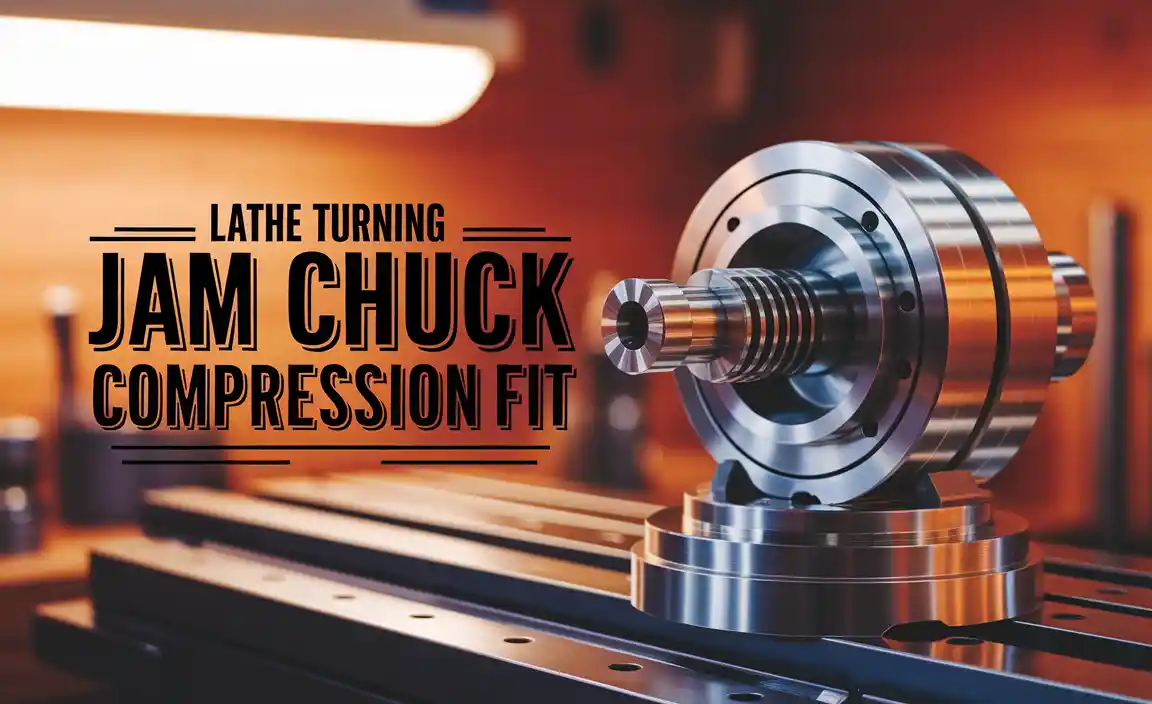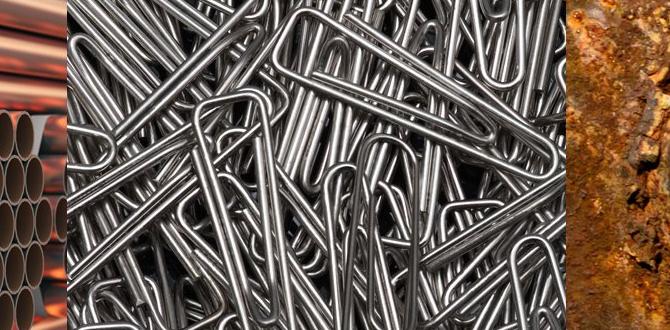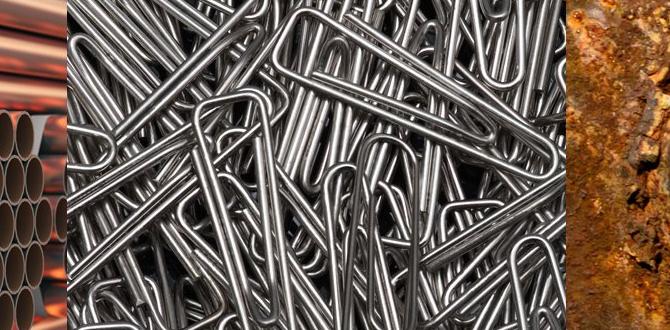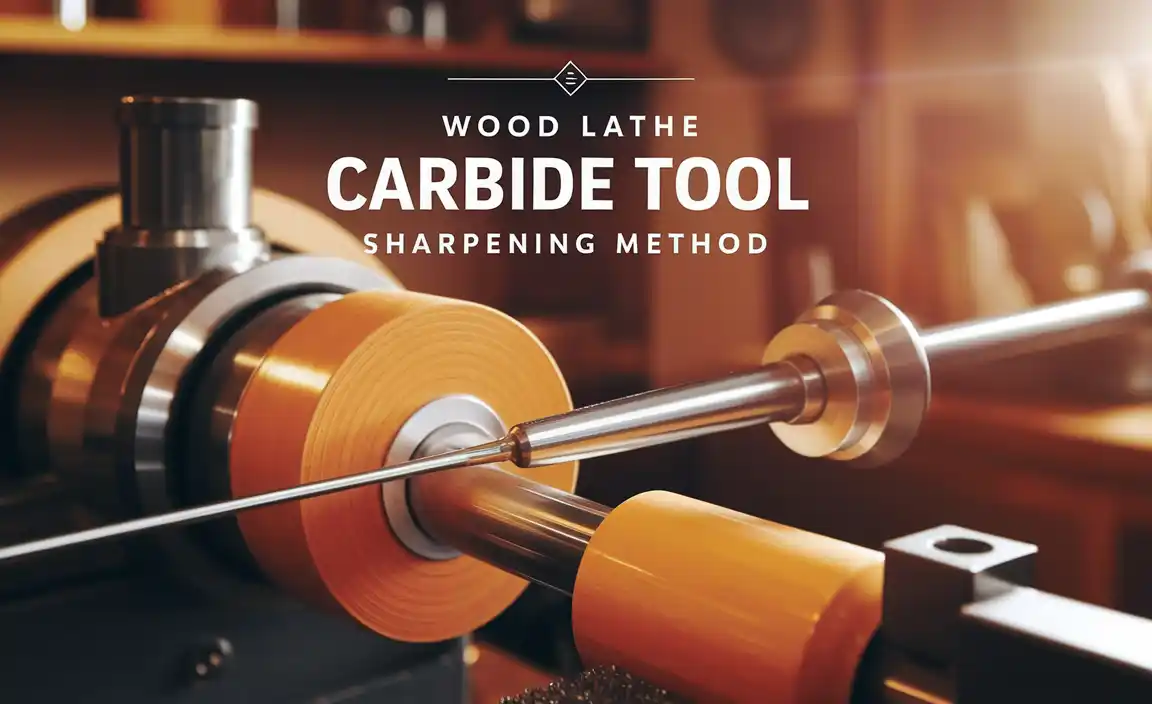Have you ever wondered how metal pieces fit together so perfectly? One of the secrets lies in cutting internal threads with a metal lathe. This fascinating skill allows you to create strong connections between parts, making everything sturdier.
Imagine building your own robot or fixing a bicycle. You might need to cut internal threads to make sure all the parts fit snugly. This technique is essential for anyone who loves working with metal.
In this article, we will explore how to cut internal threads using a metal lathe. You will discover tips, tricks, and even some common mistakes to avoid. By the end, you might find that this skill is easier than you think!
Cutting Internal Threads With Metal Lathe: A Comprehensive Guide
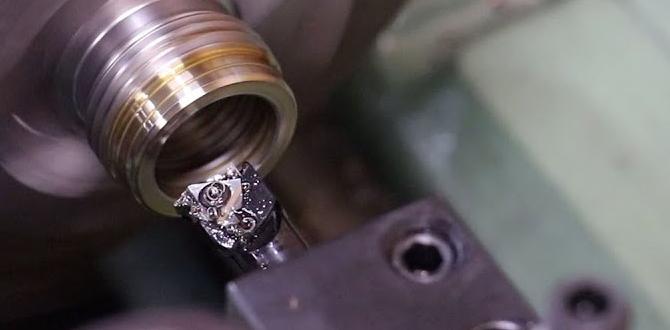
Cutting Internal Threads with Metal Lathe
Cutting internal threads with a metal lathe can seem tricky at first. However, mastering this technique opens doors to creating custom parts. You’ll learn to select the right tools and set the lathe accurately. Did you know that with a bit of practice, you can create threads that fit perfectly? Attention to detail is key. Best of all, this skill allows you to tackle exciting projects and enhance your metalworking abilities.Choosing the Right Tools and Equipment
Recommended lathe models for internal threading. Essential cutting tools for producing accurate threads.Finding the right lathe model is key for cutting internal threads. Popular choices include:
- Mini Lathes: Great for small projects.
- Toolroom Lathes: Perfect for precision tasks.
- CNC Lathes: Ideal for automated work.
Along with choosing the lathe, use essential cutting tools for best results. You may need:
- Threading Tools: These help create sharp threads.
- Insert Tools: Interchangeable and very precise.
- Cutting Oils: Use these for smoother cuts.
With the right tools, you can make strong and accurate threads.
What lathe should I use for internal threading?
For internal threading, the best lathes are mini lathes for small jobs, toolroom lathes for precision, and CNC lathes for automation. Each type serves different needs, making it easier to choose the right one for your project.
Setting Up the Metal Lathe
Steps for proper lathe setup for internal threading. Key adjustments for thread cutting accuracy.Before cutting internal threads, it’s vital to set up the metal lathe correctly. First, ensure the workpiece is secure; a wobbly piece could wiggle and ruin your threads. Use the correct cutting tool—don’t try to slice bread with a hammer! Adjust the speed of the lathe based on the material you are using; usually, slower is better for cutting threads. Check the tool height, keeping it level with the center of the workpiece. A simple misalignment can lead to messy threads.
| Adjustment | Importance |
|---|---|
| Workpiece Security | Prevents movement during cutting. |
| Cutting Tool Selection | Ensures clean, precise cuts. |
| Speed Adjustment | Affects thread quality. |
| Tool Height | Maintains proper alignment. |
Following these steps can help you create threads that not only fit but also won’t make you cringe. Remember, practice makes perfect, even if perfect sometimes means “close enough.”
Thread Cutting Techniques
Different methods for cutting internal threads (singlepoint, taps). Pros and cons of each technique.There are two main methods for cutting internal threads: single-point cutting and tapping. Each method has its own strengths and weaknesses.
- Single-Point Cutting: This method uses one sharp tool. It offers precision and control. However, it can take longer to complete the task.
- Tapping: This involves a special tool called a tap. This method is fast and easy. But it may not be as accurate as single-point cutting.
Choosing the right method depends on the project. Think about speed, precision, and tools available!
What is the advantage of using tapping?
The main advantage of using tapping is speed. It quickly creates threads inside a hole. This saves time, especially for larger projects.
Measuring and Checking Thread Quality
Tools and methods for measuring threaded holes. Techniques for ensuring proper fit and function.Measuring and checking threaded holes is key in metalworking. Accurate measurements help ensure threads fit properly. Use tools like thread gauges, calipers, and micrometers for precision. These tools identify the profile and pitch of threads.
- Thread gauges help check thread size.
- Calipers measure diameter and depth.
- Micrometers offer precise thickness readings.
Follow these methods for a good fit:
- Inspect threads for damage.
- Test with matching bolts.
- Use lubricant for smooth fitting.
What tools can measure threaded holes effectively?
The best tools are thread gauges, calipers, and micrometers. Each tool provides details that help guarantee a perfect fit.
Common Challenges and Solutions
Typical issues faced during internal threading and how to resolve them. Tips for troubleshooting threading problems.Threading on a metal lathe can be tricky. One common issue is not getting the correct depth. This can lead to threads that are either too shallow or too deep. A simple fix is to double-check your measurements as you go. Another challenge is tool wear. Make sure you use the right cutting tools and replace them regularly. And let’s face it, no one likes a dull tool. Here are some tips to troubleshoot:
| Issue | Solution |
|---|---|
| Incorrect thread depth | Check measurements closely. |
| Dull cutting tool | Replace tools regularly. |
| Chatter or vibration | Secure the workpiece firmly. |
Remember, practice makes perfect! If all else fails, coffee and a good laugh can help lighten the mood.
Safety Precautions When Threading
Essential safety gear for operating a metal lathe. Best practices for minimizing risks during machining.Working with a metal lathe can be safe if you follow some important rules. First, wearing the right safety gear is crucial. Always wear safety goggles to protect your eyes. A dust mask is needed to keep your lungs safe from harmful particles. Don’t forget gloves for hand protection. Also, be sure to tie back long hair and avoid loose clothing.
Using these best practices can help keep you safe:
- Keep the work area clean and organized.
- Stay focused while operating the machine.
- Use the right tools for threading.
- Always follow machine instructions.
What safety gear do I need for using a metal lathe?
You need to wear safety goggles, a dust mask, and gloves. Tie back long hair and wear fitted clothes. This gear helps protect you from injuries and keeps you safe while working.
Maintenance Tips for Longevity of Equipment
Routine maintenance practices for metal lathes. Importance of tool maintenance for thread cutting performance.Taking care of your metal lathe is key for it to last longer. Regular maintenance helps keep it in good shape. Clean your machine often to avoid dust and dirt buildup. Change tools when they get dull. Dull tools can make bad threads.
Here are some simple tips:
- Check oil levels regularly.
- Tighten loose screws and bolts.
- Inspect belts for wear.
- Clean the workspace around the lathe.
Good care leads to better thread cutting. A happy lathe makes a happy user!
Why is Tool Maintenance Important?
Tool maintenance is key for cutting threads perfectly. Dull tools can lead to uneven threads and mistakes. Keeping tools sharp can make your work easier and faster.
Conclusion
In conclusion, cutting internal threads with a metal lathe is an important skill. You need the right tools and techniques for success. Practice will help you improve your accuracy and speed. Remember to prioritize safety while you work. If you want to learn more, consider reading tutorials or watching videos on this topic. Happy threading!FAQs
Sure! Here Are Five Questions Related To Cutting Internal Threads With A Metal Lathe:Sure! Here are five questions related to cutting internal threads with a metal lathe: 1. What is a metal lathe? A metal lathe is a special machine that shapes metal. It spins the metal while tools cut it. 2. How do you start cutting threads? You start by setting the lathe to the right speed. Then, you use a special tool called a threading tool. 3. Why is it important to measure carefully? Measuring carefully helps make sure the threads fit perfectly. If they are wrong, the parts won’t connect. 4. What should you do if something goes wrong? If something goes wrong, you should stop the lathe right away. Check what happened and fix it before trying again. 5. How can you stay safe while using a lathe? To stay safe, always wear safety goggles and keep your hands clear of moving parts. It’s better to be careful!
Sure! Please give me the question you want me to answer.
What Are The Essential Tools And Attachments Needed For Cutting Internal Threads On A Metal Lathe?To cut internal threads on a metal lathe, you need a few important tools. First, you need a threading tool that has a sharp edge. Next, use a tailstock with a tap, which helps make the threads inside a hole. You also need a way to measure accurately, like a caliper. Finally, a good cutting lubricant helps make the job easier.
How Do You Determine The Correct Feed Rate And Depth Of Cut When Threading Internally?To find the right feed rate and depth of cut when threading inside something, you first look at the material. Softer materials need a faster feed rate and lighter cuts. For harder materials, slow down the feed and make deeper cuts. You can also follow the machine’s instructions or ask for help if you’re unsure. Always remember to test on scrap material first!
What Is The Difference Between Using A Threading Tool And A Conventional Parting Tool For Internal Threading?When you use a threading tool, it makes grooves in a circle inside a piece, creating threads like those on a screw. A conventional parting tool just cuts straight lines and doesn’t make these round threads. So, if you want to add threads, you need the special threading tool. It helps the pieces fit together better. Using the right tool makes it easier and more accurate!
How Do You Set Up The Lathe To Ensure Accurate Alignment When Cutting Internal Threads?To set up the lathe for cutting internal threads, you first check the machine’s level. Make sure the workpiece is held tightly in the chuck, which is the part that grips the object. Then, you align the cutting tool with the center of the workpiece. Use a dial indicator, a tool that measures small distances, to ensure everything is straight. Finally, make sure the machine is set to the right speed for cutting threads.
What Techniques Can Be Employed To Achieve A Smooth Finish On Internal Threads After Cutting?To make internal threads smooth, you can use a few techniques. First, you can file the edges gently to remove sharp bits. Next, you can use a soft cloth with oil to help it shine. Finally, a thread tap can clean up the inside and make it smoother. Trying these methods will help you achieve a nice finish!
{“@context”:”https://schema.org”,”@type”: “FAQPage”,”mainEntity”:[{“@type”: “Question”,”name”: “Sure! Here Are Five Questions Related To Cutting Internal Threads With A Metal Lathe:”,”acceptedAnswer”: {“@type”: “Answer”,”text”: “Sure! Here are five questions related to cutting internal threads with a metal lathe: 1. What is a metal lathe? A metal lathe is a special machine that shapes metal. It spins the metal while tools cut it. 2. How do you start cutting threads? You start by setting the lathe to the right speed. Then, you use a special tool called a threading tool. 3. Why is it important to measure carefully? Measuring carefully helps make sure the threads fit perfectly. If they are wrong, the parts won’t connect. 4. What should you do if something goes wrong? If something goes wrong, you should stop the lathe right away. Check what happened and fix it before trying again. 5. How can you stay safe while using a lathe? To stay safe, always wear safety goggles and keep your hands clear of moving parts. It’s better to be careful!”}},{“@type”: “Question”,”name”: “”,”acceptedAnswer”: {“@type”: “Answer”,”text”: “Sure! Please give me the question you want me to answer.”}},{“@type”: “Question”,”name”: “What Are The Essential Tools And Attachments Needed For Cutting Internal Threads On A Metal Lathe?”,”acceptedAnswer”: {“@type”: “Answer”,”text”: “To cut internal threads on a metal lathe, you need a few important tools. First, you need a threading tool that has a sharp edge. Next, use a tailstock with a tap, which helps make the threads inside a hole. You also need a way to measure accurately, like a caliper. Finally, a good cutting lubricant helps make the job easier.”}},{“@type”: “Question”,”name”: “How Do You Determine The Correct Feed Rate And Depth Of Cut When Threading Internally?”,”acceptedAnswer”: {“@type”: “Answer”,”text”: “To find the right feed rate and depth of cut when threading inside something, you first look at the material. Softer materials need a faster feed rate and lighter cuts. For harder materials, slow down the feed and make deeper cuts. You can also follow the machine’s instructions or ask for help if you’re unsure. Always remember to test on scrap material first!”}},{“@type”: “Question”,”name”: “What Is The Difference Between Using A Threading Tool And A Conventional Parting Tool For Internal Threading?”,”acceptedAnswer”: {“@type”: “Answer”,”text”: “When you use a threading tool, it makes grooves in a circle inside a piece, creating threads like those on a screw. A conventional parting tool just cuts straight lines and doesn’t make these round threads. So, if you want to add threads, you need the special threading tool. It helps the pieces fit together better. Using the right tool makes it easier and more accurate!”}},{“@type”: “Question”,”name”: “How Do You Set Up The Lathe To Ensure Accurate Alignment When Cutting Internal Threads?”,”acceptedAnswer”: {“@type”: “Answer”,”text”: “To set up the lathe for cutting internal threads, you first check the machine’s level. Make sure the workpiece is held tightly in the chuck, which is the part that grips the object. Then, you align the cutting tool with the center of the workpiece. Use a dial indicator, a tool that measures small distances, to ensure everything is straight. Finally, make sure the machine is set to the right speed for cutting threads.”}},{“@type”: “Question”,”name”: “What Techniques Can Be Employed To Achieve A Smooth Finish On Internal Threads After Cutting?”,”acceptedAnswer”: {“@type”: “Answer”,”text”: “To make internal threads smooth, you can use a few techniques. First, you can file the edges gently to remove sharp bits. Next, you can use a soft cloth with oil to help it shine. Finally, a thread tap can clean up the inside and make it smoother. Trying these methods will help you achieve a nice finish!”}}]}
